This gaiwan, designed in the style of the Ming Dynasty, is crafted using the underglaze blue and white porcelain technique, and is entirely hand-painted. The intricate and exquisite artwork features peach blossoms, ducks, butterflies, and the spring river. Two adult ducks, accompanied by ducklings, swim freely in the warming spring waters, surrounded by blooming peach blossoms and playful butterflies. The scene is vivid and natural, evoking a serene beauty. The artwork captures the essence of early spring on the river, portraying how ducks are the first to sense the warming waters, expressing joy and reverence for the arrival of spring.
Design and Appearance
- Shape: The gaiwan has smooth lines and a comfortable grip, combining unique and beautiful design elements.
- Glaze Color: The surface of the gaiwan has a warm and smooth glaze. The base color is white, with the hand-painted underglaze blue technique, creating a deep and layered blue color.
Craftsmanship and Techniques
- Hand-Painted Artwork: The designs on the gaiwan are meticulously hand-painted, making each piece unique and full of artistic value.
- Tin Spot Technique: The glaze surface uses the tin spot technique, creating a mottled visual effect that adds a sense of history and texture, enhancing the antique charm of the gaiwan.
Ming-style teaware always features a distinctive tin spot pattern, giving the tea ware a unique charm. The formation of tin spots is due to the high content of iron elements in local parts of the blue pigment. After reaching saturation in the high-temperature glaze solution and cooling down, the iron elements in the supersaturated part start to precipitate. If the iron content of the blue pigment is higher and the cooling rate is appropriate, tin spots are more likely to appear on the surface of the ware.
In addition to firing and materials, the formation of tin spots also involves the factor of glaze material. During the painting process, tin spots can also be formed due to the accumulation of blue pigment. Tin spots are more likely to appear on the surface of the ware at the intersections and the starting and ending points of brushstrokes. The formation of tin spots can be said to be a natural creation or an artificial decoration. These tin glazes not only add a rustic texture to the Gaiwan but also imbue it with a unique sense of history.
The artwork on this gaiwan is delicate, with fine brushstrokes that outline a unique sense of line beauty. The underglaze blue pigment is rich, featuring distinctive and prominent tin spots that appear exceptionally beautiful and captivating under the light.


















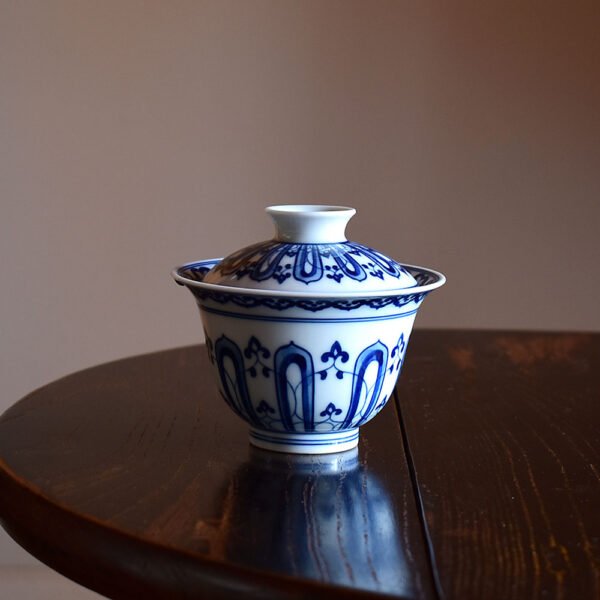
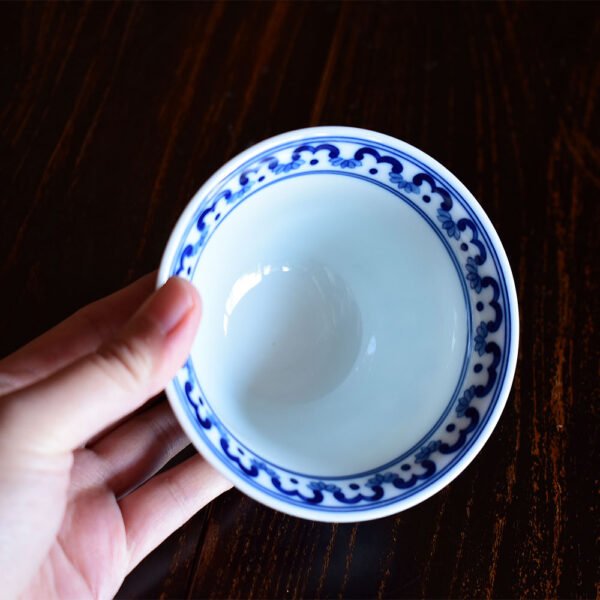
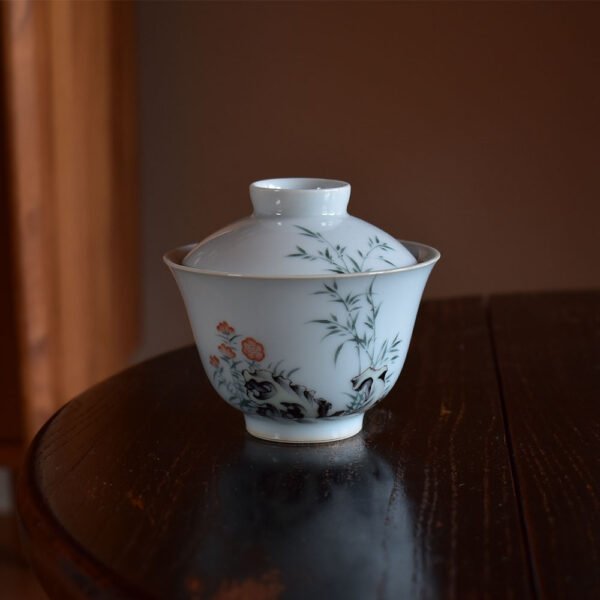
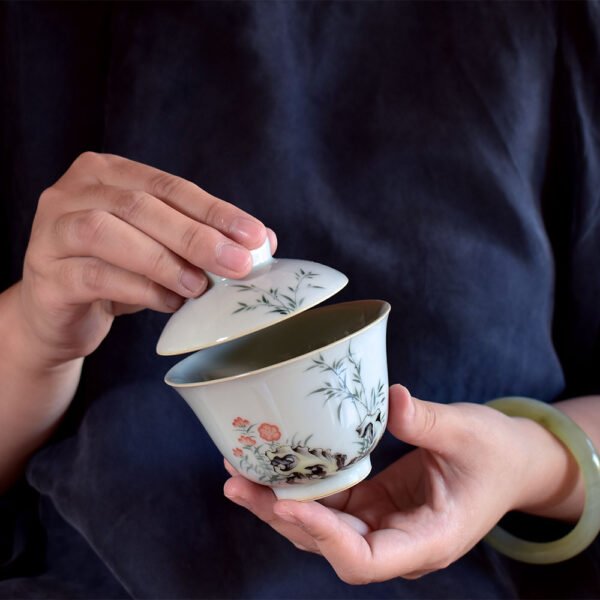
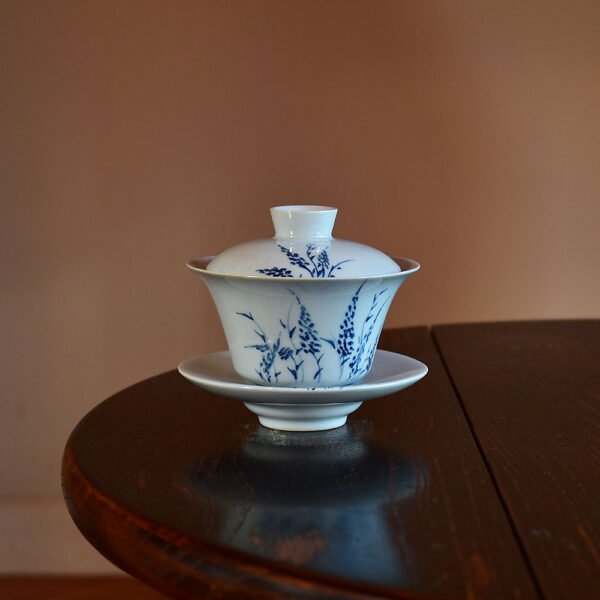
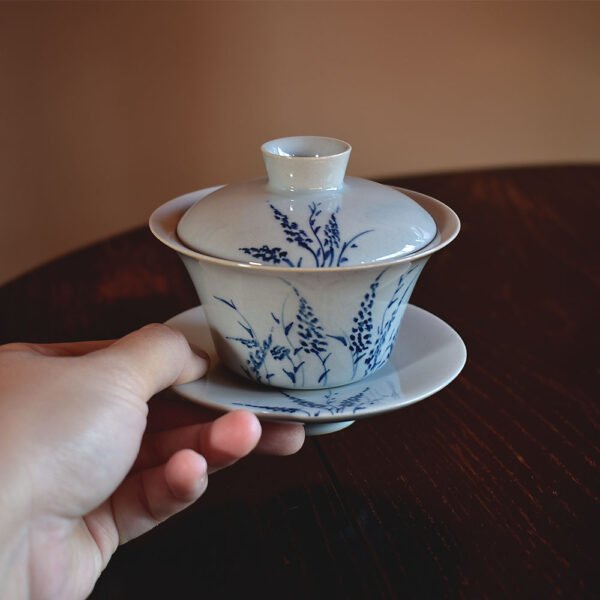
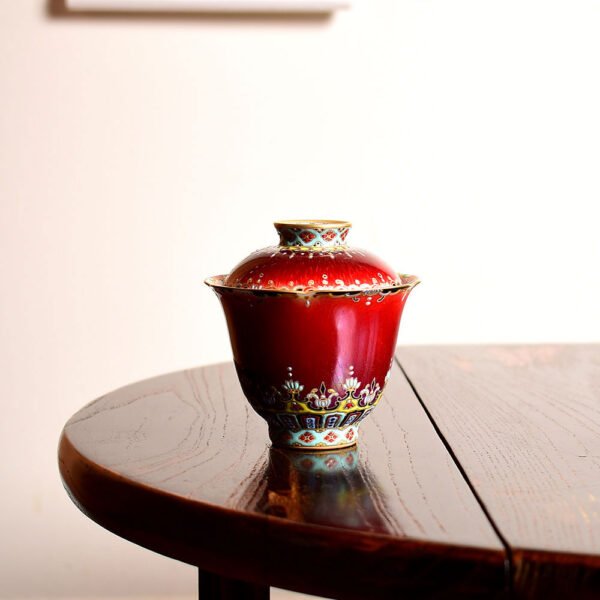
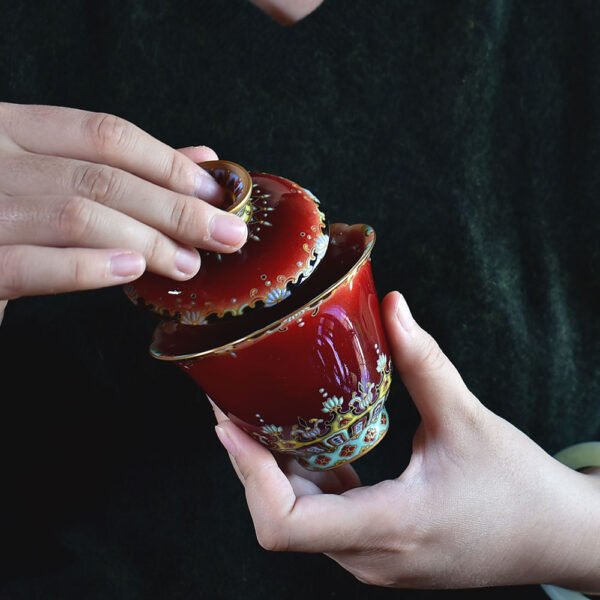
There are no reviews yet.